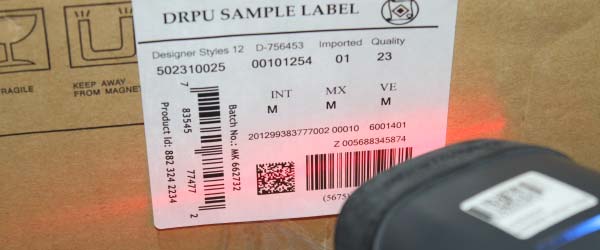Post Office Barcodes: Ensures Accuracy and Quality
Posted By: Teachable Tech | Last Updated On:

Post offices use various methods to ensure the accuracy and quality of the information encoded in barcodes. Here are some of the ways:
Overall, post offices take multiple steps to ensure the accuracy and quality of the information encoded in barcodes to improve package tracking and delivery management.
Postal Workers Ensure The Accuracy and Quality:
Postal workers use barcode scanners to read the information encoded in barcodes on mail and packages. The scanner reads the barcode, and the information is automatically recorded into a computer system. This ensures that the information is accurately captured and tracked throughout the delivery process. Postal workers may also visually inspect the barcode to ensure that it is of high quality, and re-print or replace barcodes that are damaged or unreadable. Additionally, postal workers may verify the information on the package or mail against the information in the barcode to ensure that there are no discrepancies.
You may also like: What is selecting and implementing barcode systems in post offices?
Post offices take several measures to ensure customer privacy and data security when using barcode systems:
Post office employees who handle customer data are trained on data security and privacy practices to ensure they are handling customer data appropriately.
Post offices have policies in place for how long they will retain customer data. Once data is no longer needed, it is securely deleted.
Post offices restrict access to barcode systems to authorized personnel only. This prevents unauthorized access to customer data.
Customer data is stored securely in databases that are protected with firewalls and other security measures.
Barcode systems used by post offices are often encrypted to protect customer data during transmission.
Overall, post offices take customer privacy and data security seriously when using barcode systems, and they implement a range of measures to protect customer data from unauthorized access, disclosure, or misuse.
You may also like: What are the benefits of barcode systems in post offices?
Post office barcode systems improve efficiency and accuracy in several ways, such as:
Package Tracking: By using barcodes on packages, post offices can track their movements and provide real-time updates to customers on their package status.
Sorting and Routing: Barcodes on mail and packages help post offices quickly sort and route items to their appropriate destinations, reducing errors and delays.
Delivery Management: Barcodes on packages can enable delivery workers to quickly and accurately scan packages, confirm delivery, and update the status of packages in real-time.
Data Accuracy: Barcode systems can reduce the chance of data entry errors and ensure that the correct information is associated with each package, improving the accuracy of delivery and tracking information.
Post office barcode systems improve package tracking and delivery management by providing a unique identification number to each package that is scanned and recorded at each stage of the delivery process. Barcode systems also allow for more efficient and streamlined package handling and sorting, reducing the risk of lost or misdirected packages. Overall, barcode systems help to improve the speed, accuracy, and transparency of the package delivery process for both the post office and the customer.
Overall, barcode systems can significantly improve the efficiency and accuracy of post office operations, leading to faster, more reliable delivery and improved customer satisfaction.
You may also like: What are the uses of post offices barcode systems?